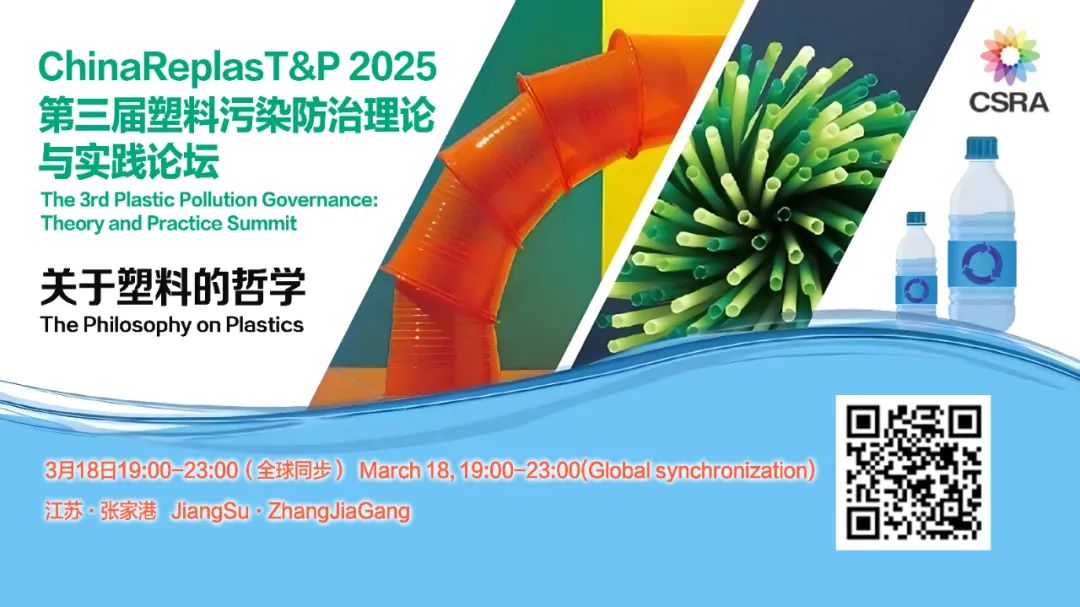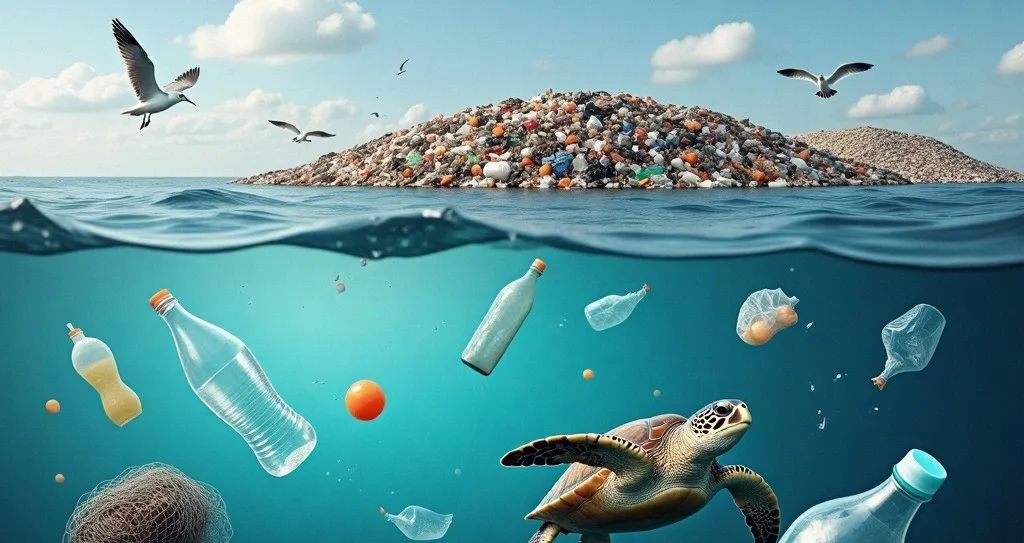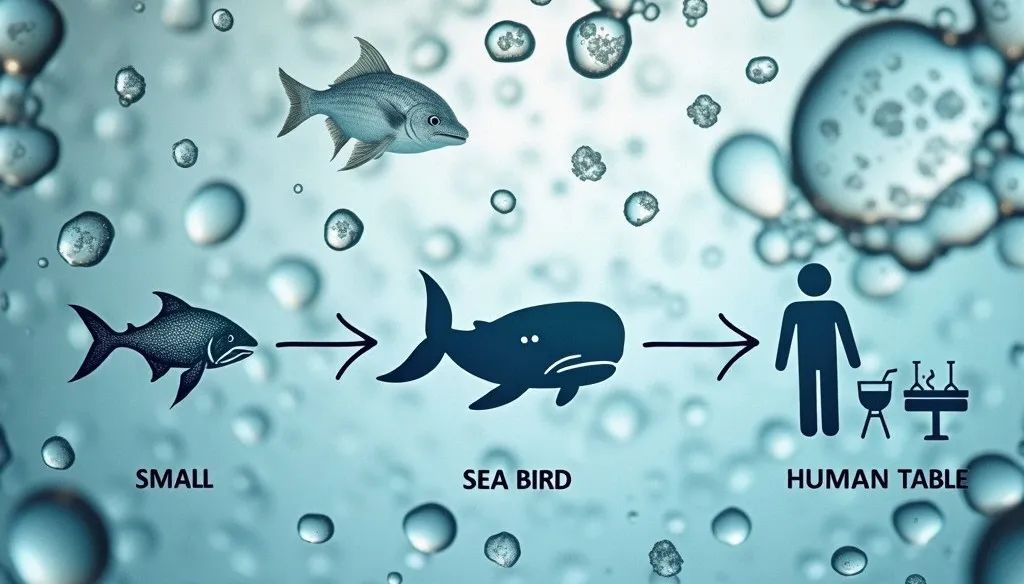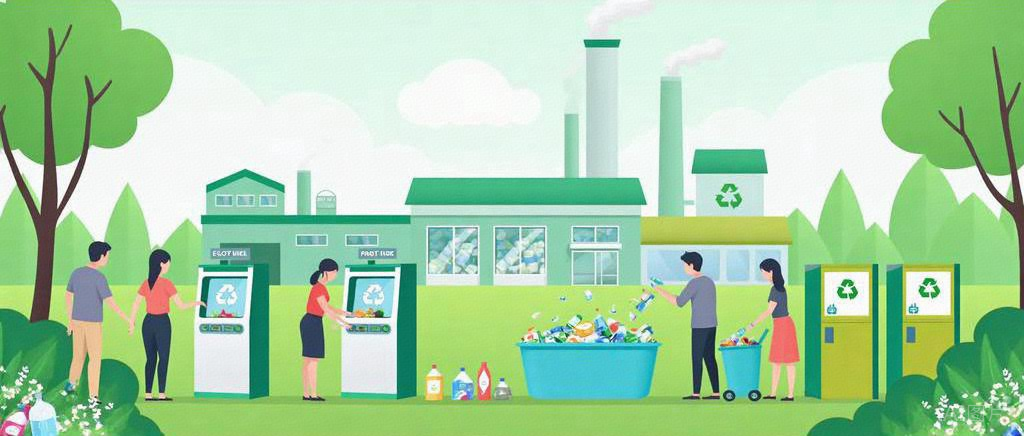塑料“技术超前、文明滞后”的困境丨附塑料污染防治理论与实践论坛议程

主题:关于塑料的哲学
倒计时 26 天
塑料的发明曾被视为人类文明的里程碑,但其引发的生态危机却暴露了技术与文明发展的断裂。塑料的不可降解性超越了自然循环的边界,而社会管理体系却未能同步演进,形成了“技术超前、文明滞后”的深刻矛盾。
The invention of plastic was once regarded as a milestone of human civilization, but the ecological crisis it triggered has exposed the rupture between technology and civilization. The non-degradability of plastics has exceeded the boundaries of the natural cycle, and the social management system has failed to evolve simultaneously, forming a profound contradiction of "technology ahead and civilization behind."

The true cost of plastic is grossly underestimated. Only 6% of the world's plastic is recycled, the rest is released through landfills or incineration, and microplastic pollution has seeped into polar glaciers and human blood. Who bears the true cost? Producers, consumers, governments, or sacrificed ecosystems?

The ethical reconstruction of responsibility attribution is the key to solve the dilemma. The chain of responsibility for plastic pollution is complex: polymer companies pursue profit maximization, packaging companies rely on disposable designs, consumers are addicted to convenience, and government regulation lags behind. It is necessary to promote the ethics of responsibility from "post-accountability" to "pre-shared responsibility", for example, through the extended Producer responsibility system (EPR), packaging design, recovery costs internalized into the enterprise value chain.
The philosophical pitfalls of alternative materials are equally alarming. Biodegradable plastics are often touted as a solution, but their reliance on a "ready-to-use" logic does not challenge the cult of convenience of modernity. The real breakthrough needs to go beyond material substitution to a cultural change of "demand reduction" and "reuse."
Institutional innovation is the core of sustainable governance. The establishment of plastic reuse system needs institutional escort: for example, recyclable design standards force products to be easily disassembled and the material is simple; Consumer participation mechanisms incentivize recycling through deposit returns or carbon credits; The mandatory use ratio of recycled plastics requires supporting certification and traceability technology to prevent "green washing".
The essence of the plastic crisis is an imbalance in the relationship between humans and nature. To solve the dilemma, three major shifts are needed: from "conquering nature" to "symbiotic cycle"; From "ambiguous power and responsibility" to "global co-governance"; From "infinite production" to "closed-loop design". Through thinking and practice, I hope to write a future script for plastics that is both ethical and feasible.
How to break through the dilemma of "advanced technology and lagging civilization"?
The plastic crisis is a typical example of technological out-of-control: we have created materials that transcend natural degradation capabilities, but have not simultaneously developed a matching management system.
塑料正处在“技术超前、文明滞后”困境中。

第三届塑料污染治理理论与实践论坛议程
The 3rd Forum on Plastic Pollution Governance: Theory
and Practice
会议主题:关于塑料的哲学
会议地点:江苏张家港 华芳金陵酒店
会议时间:2025年3月18日 19:00-23:00(全球同步)
会议主持:中国合成树脂协会塑料循环利用分会——林西(副秘书长)
Chairperson of the meeting:China Plastics Reuse and Recycling Association,Lin Xi(Deputy Secretary-General )
语言:中英文字幕同传
Languages: Bilingual
Subtitles
|
| |
3月18日 19: 00-19: 05 |
|
|
主题分享(Keynote Presentations) | |
3月18日 19: 05-19: 35 |
——OECD专家 (确认中) ——OECD Expert |
| 3月18日 19: 35-20: 00 |
——中国合成树脂协会塑料循环利用分会创始人、常务副会长 王旺 |
|
主题分享(Keynote Presentations) | |
3月18日 20: 00-20: 25 |
Veolia's global plastic recycling practices and real-world challenges ——威立雅专家(确认中) ——Veolia's Expert (To be confirmed) |
3月18日 20: 25-20: 50 |
一期工程完成后,大规模建设二期工程的逻辑思考与期待 After the completion of the first phase of the project, the logical thinking and expectation of the large-scale construction of the second phase of the project |
|
全球思想碰撞:治理塑料污染9个关键问题 Global Thought Collision: 9 Key Issues in Plastic Pollution Control | |
3月18日 20: 50-23: 00 |
1. 塑料真的廉价吗?真实的塑料成本是多少?谁应该为解决治理塑料污染支付成本? 1. Is plastic really cheap? What Is the true cost of plastic? Who should pay for the cost of tackling plastic pollution control? |
|
2.“谁该为塑料污染负责?——是聚合物企业、是包装企业、是消费品牌、是消费者、是政府,还是‘系统’的共谋?” 2. "Who should be responsible for plastic pollution?—Polymer Producers, Packaging Companies, Brands, Consumers, Governments, or a Collective Complicity of the 'System'?" 围绕责任归属展开讨论,探讨“个体选择”、“企业行为”、“制度性鼓励”、“无需承担责任”的交织。 Centering on the responsibility attribution, it discusses the interweaving of "individual choice", "enterprise behavior", "institutional encouragement" and "no need to bear responsibility". | |
|
3. 经济学视野下,塑料泄露的核心原因:“错误的定价”、“无需承担的责任”、“不明确的物权”。 3. From an economic perspective, the core causes of plastic pollution are: "incorrect pricing," "absence of accountability," and "unclear property rights." | |
|
| |
|
5. 塑料制品大多一次性使用,如何建立塑料制品重复使用的制度体系?并能够持续运行。 | |
|
| |
|
7. 再生塑料的认证制度,能否保证,强制使用再生材料的制度持续真实的运行? | |
|
8. Can plastic pollution control and economic development achieve a balance? “增长优先论”:将塑料污染视为发展的必要代价,默认“先污染后治理”的线性路径。但这一叙事忽视了两个事实: | |
|
9. To address plastic environmental pollution,should we focus on "managing plastic pollution," or on "establishing efficient utilization of plastic resources"? | |

本篇文章来源于微信公众号:废塑料新观察
推荐文章
-
EDITOR编者按金发科技2024年业绩表现亮眼,营收与利润均实现大幅增长,特别是扣非净利润同比增长超240%,凸显主营业务的盈利能力持续增强。2025年一季度延续强劲增长势头,营收与利润继续保持高增速,展现出良好的发展势能。尽管经营现金流略有回落,但整体财务状况稳健,增长质量较高,彰显公司在新材料领域的竞争优势和韧性。 李 编 博士 高分子物理与化学专业 进入废塑料化学循环领域4年,专注PET、PE、UPR等化学回收金发科技股份有限公司(以下简称“金发科技”)在2024年实现营业收入605.14亿元,同比增长26.23%;归属于上市公司股东的净利润为8.25亿元,同比增长160.36%;扣除非经常性损益后归属于上市公司股东的净利润为6.75亿元,同比大幅增长240.13%。全年基本每股收益为0.3120元,同比增长162.18%。2024年经营活动产生的现金流量净额为28.45亿元,展现出稳健的经营能力。 此外,公司同步披露了2025年第一季度报告:一季度实现营业收入156.7亿元,同比增长49.1%;归属于上市公司股东的净利润为2.47亿元,同比增长138.2%;扣除非经常性损益后的...
-
食品加工与再生资源回收中,分选环节是品质把控的核心。在数字化与智能化浪潮席卷全球的当下,智能分选行业正迎来一场前所未有的技术革命。美亚光电勇立潮头,全面推出新一代AI+数智化色选机——美亚大师 4.0。 它超越传统加工设备范畴,进化为生产线上的智能体!依托美亚光电深厚的行业底蕴,通过全球领先的AI分选大模型,融合多模态通用人工智能引擎与群体智能协作网络,美亚大师将为生产线注入智慧决策的能力!这绝非一般意义上的机器升级,而是通过互联互通,以数据作为核心驱动力,与大家携手构建一个全新的行业生态!那么,美亚大师如何构建这一创新生态呢?关键在于三大革命。信息流革命1让设备数据活起来!设备健康、工艺、故障、品质等数据,不再被尘封,化为流动资产,为生产决策提供实时且精准的依据。能源流革命2让每度电都创造价值!实时监测设备负载,避免无效能耗,以及关键器件寿命损失,降低生产成本,提升设备维护效益。品质流革命3让品质从概率变成必然!!不仅减少食品企业客诉、退货,更推动行业品质标准全面升级。经过这三大革命,美亚大师将...
-
为深入贯彻落实国家关于塑料污染治理和循环经济发展的战略部署,推动我国塑料回收再生行业的高质量发展,中国合成树脂协会塑料循环利用分会拟联合相关机构成立“中国塑料回收再生数据研究工作组”。现面向行业招募工作组成员,共同开展塑料回收再生行业数据研究工作。 — 1 —背景与现状 近年来,塑料污染治理已成为全球关注的热点问题。随着《关于进一步加强塑料污染治理的意见》等政策的实施,我国在塑料污染治理和循环经济领域取得了显著成效。然而,在国际谈判和国内政策制定中,废塑料回收再生数据的准确性和透明度仍存在较大提升空间。 (一)国际谈判中的数据隐患在国际塑料污染治理谈判中,欧美日韩等发达国家和地区基本都有自己统一的塑料回收计算方法。这些国家通过标准化的统计逻辑和透明的数据来源,构建了具有高度科学性和可比性的计算体系。这种统一的核算框架不仅为其国内政策制定提供了精准依据,也在国际谈判中成为争取话语权的重要工具。然而,我国目前的废塑料回收量统计方法尚未完全与国际通行规则接轨,数据透明度和可信度存在显著短板。例如,...







